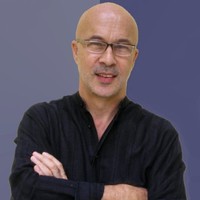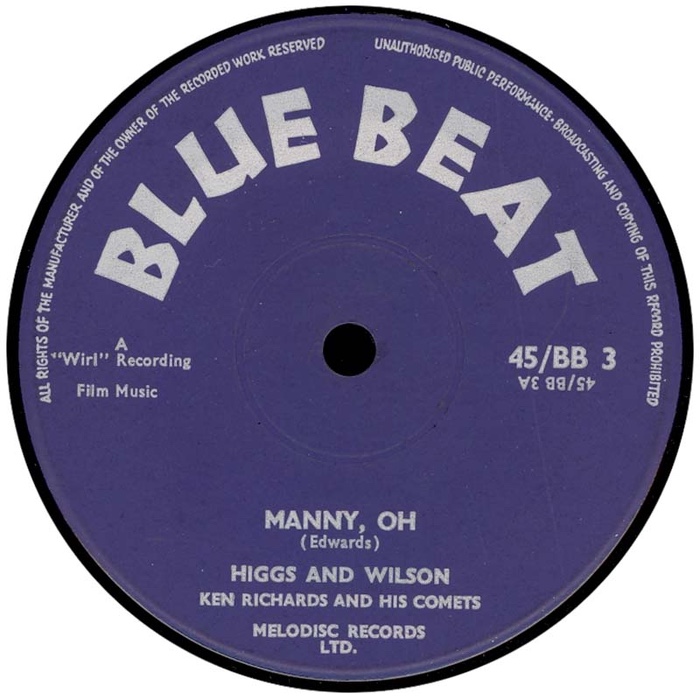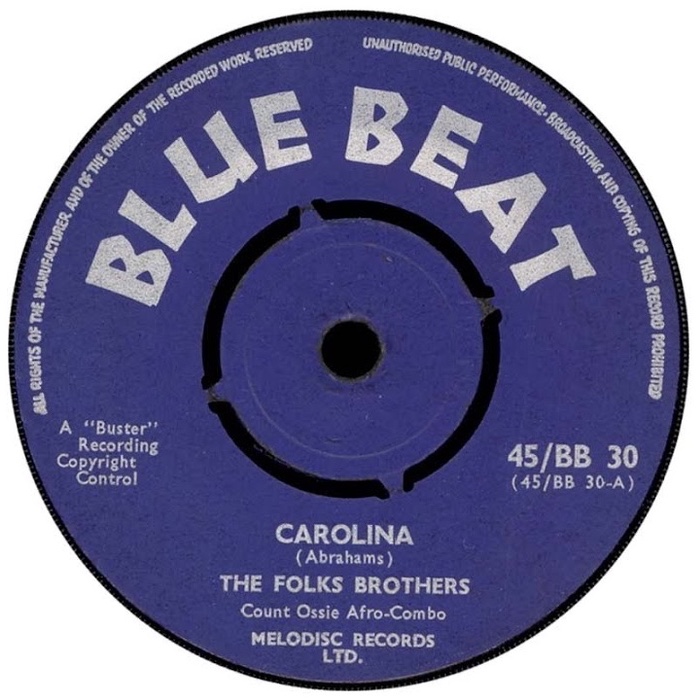The Influence of the Audio Engineer
In the Development of Jamaica's Music
 We sat with Ray Hitchins, to discuss his 2015 book "Vibe Merchants: The Sound Creators of Jamaican Popular Music". Ray is Coordinator for the Music and Performance Studies BA program at the University of the West Indies but he has worked in the Jamaican music Industry since 1981 as a musician, writer, arranger, engineer and producer.
We sat with Ray Hitchins, to discuss his 2015 book "Vibe Merchants: The Sound Creators of Jamaican Popular Music". Ray is Coordinator for the Music and Performance Studies BA program at the University of the West Indies but he has worked in the Jamaican music Industry since 1981 as a musician, writer, arranger, engineer and producer.
His recording and music credits include work with Stephen and Ziggy Marley, Marcia Griffiths, Dennis Brown Barrington Levy, John Holt, Alton Ellis, Toots Hibbert, Black Uhuru, Sly and Robbie, The Mighty Diamonds, Richie Stephens and Carlen Davis. He completed his PhD in ethnomusicology at the University of Leeds in 2011 and now writes and lectures about aspects of Jamaican music practice and its unique recording studio culture.
What follows is a collection of thoughts on the Jamaican music industry and the influences that helped to shape it.
Transcription
In my research on Jamaica popular music, I've tried to understand and discover some of the elements that made it different and produced the incredible success that it enjoyed between 1960 and the 1990s. As a working musician one of the most noticeable differences that I experienced coming to Jamaica in 1981 was the way that recording sessions were conducted and the dominance of the audio engineer in the recording space, who not only decided how the instruments were recorded but very often was at liberty to change the sound of the instruments during the recording session with minimal input from a producer if one existed, or the musicians who he was recording.
The name that kept cropping up was Graeme Goodall who turned out to be an Australian audio engineer that came to Jamaica in the 1952-53. I managed to track Graeme down to his home in Atlanta at this time, but he came to Jamaica in the 50s and stayed here till the 70s. He was really the first formally trained audio engineer to work in Jamaica, and trained many of the early engineers who worked both in the radio broadcast field and in the music industry. Graeme came here with a company called Redifusion in the UK to set up the RJR studios and he worked as the chief engineer there for some years. So I asked him what was the state of recording here for music here in the 1950s when he arrived and he explained that there were only two studios, Stanley Motto studio and Ken Khouri's Records Limited Studio. But both of those studios were really very basic and only suitable for recording folk music.
So I asked him how did the first records get recorded, because there is clearly, when you listen to the recorded music of Jamaica, a transition at the turn of the 1960s and the sound of the records changed. And, Goodall explained to me that in the 1950s there was growing interest in producing popular music and that he was approached by Chris Blackwell, who in 1957, according to Goodall, was running a Jukebox company and was interested in trying to lower his operating costs of importing records by producing local records, which he thought would be a bonus for him, if he could produce records at a standard that was equivalent to American imports. And so he approached Goodall, and said is it possible to make a record in Jamaica, that sound similar, can play on my jukebox and compare with an American import. Goodall basically said yes it is but you would have to do it at RJR; at the radio station, where you would use the main auditorium and it would mean stripping out the other recording studios in the place to equip it, for the session. Goodall also explained to him that there was absolutely no chance of the management agreeing to that happening.
Goodall and Blackwell came to an agreement that at 11 o'clock at night, after the station closed, they would bring musicians in the studio without the management's knowledge. Graeme says they gave the security guard a money and he proceeded to pull up all the equipment in the studio and record a song there entitled "Boogie In My Bones", by Laurel Aitkens, which was; the genre is really termed pre-ska or Jamaican Boogie is the term that is really given to it. When that song was released in Jamaica it was so popular it went to #1 on the Jamaican charts for 13 weeks because it was a home grown piece of music that had this foreign sound. And it really set the stage for what local music producers would be aiming for in the future. Goodall says that on that session he had to pull up all the other studios and to record the music, he set up a temporary reverb chamber in the men's bathroom downstairs at RJR. And, before the staff arrived at RJR for the start of a new day, he had to put all the equipment back, and then stayed there and went back to work that day.
Now the important thing about this anecdote is, to my mind, it really established for a short period in Jamaica between 1959 to 1960; it established this process of illicitly using the radio stations in Jamaica. Initially it was just RJR and by 1960, JBC had opened as well. And, because the audio engineer was really the guy who set this up, he became the person who was completely responsible for the session and, who everybody had to please. It wasn't the producer or the record company, it was the audio engineer. But, in addition to that, nobody in Jamaica at that time, had any recording experience or production knowledge and so, the audio engineer was the guy who had all the information and conducted the session and knew how and what to do.
So, in trying to validate what Goodall had said, I actually contacted Edward Seaga [JTL: Prime Minister of Jamaica: 1980 to 1989] who in 1959 was a record producer. He recorded a song called Manny Oh, by Higgs and Wilson in 1959 that went to #1 in the local charts, and he confirmed that, yes, it was recorded at RJR, we did it at night and it was recorded by Graeme Goodall. And I asked him, who was really responsible for the sounds on the record and he said well, it was really the musicians, they were the guys who had the know-how and the ear and everything else. And I said, yes but, who established the balances of the music, who decided how much bass and how much kick drum and whatever. And, Seaga said to me, oh no, no, no, you misunderstand this. This was not multitrack recording this was just one track recording, very basic; the musicians just came in and played and the engineer captured that. And I said yes, but Goodall confirmed that individual instruments were miced-up in the recording room so there was in fact a mic on the kick drum, a mic on the bass, a mic on the keyboard. And, I asked him, who made those decisions; did the musicians come into the control room after it was recorded and say to the engineer let's do another take and bring the piano down a little bit? And, he said, no, no no, the musicians never came into the control room at all. They heard the playback after the recording, in the auditorium room. And I said, well did you direct Goodall what to do? And he said, oh no, no, he said, I didn't even know that was possible. He said, you have to excuse me, because at the time I was a young producer, I wasn't really used to recording so it was Goodall who would have known what to do and how to do it.
So this kind of confirms for me that we had this culture initiated in the recording space where the engineer was the go to guy, he was the guy who made the decisions. And another piece of information that kind of confirms this, is; if you think about a song like "Oh Carolina" by The Folkes Brothers, recorded in 1960. It was recorded in the year that the new government owned JBC studio opened and that studio would have been the pride and joy of the Jamaican government. But, the Jamaican government also had a policy of persecuting Rastas and on that song in particular, The Folkes Brothers employed famously Count Ossie and his Rastafarian drummers. And although that is stated in the literature many, many, many times, it raises the question: Would the government of Jamaica allow a group of Rastas to go in there and record a song, for a private producer? I think it was Prince Buster who was the producer on the session but really acted as the executive. And when I asked Goodall about this he said oh yes this was one of my proteges, that was somebody who was my apprentice at RJR and I taught audio engineering and he went across to work for JBC and he did that recorded session.
And so I think this raises many questions about the process of audio engineering that we see reflected in the 1960s, and the 1970s, and the 1980s going into 1990s, where Jamaican audio engineers really sat on the forefront of a change that was happening in the industry and happening internationally. We were seeing this change where music was moving from the realism of the 1950s where performances were looked on as being the capture of a live performance as a facsimile of sound, to a process where increasingly producers and engineers were trying to create new sounds. And I think it would be fair to say that although Jamaican audio engineers were not necessarily leading that push they were certainly a very important part of it. And I think the recognition of that is important but it also allows us to understand how the music was made and the way it assumed the shape that it assumed in the 1960s going into the 1970s.
 We sat with Ray Hitchins, to discuss his 2015 book "Vibe Merchants: The Sound Creators of Jamaican Popular Music". Ray is Coordinator for the Music and Performance Studies BA program at the University of the West Indies but he has worked in the Jamaican music Industry since 1981 as a musician, writer, arranger, engineer and producer.
We sat with Ray Hitchins, to discuss his 2015 book "Vibe Merchants: The Sound Creators of Jamaican Popular Music". Ray is Coordinator for the Music and Performance Studies BA program at the University of the West Indies but he has worked in the Jamaican music Industry since 1981 as a musician, writer, arranger, engineer and producer. 


